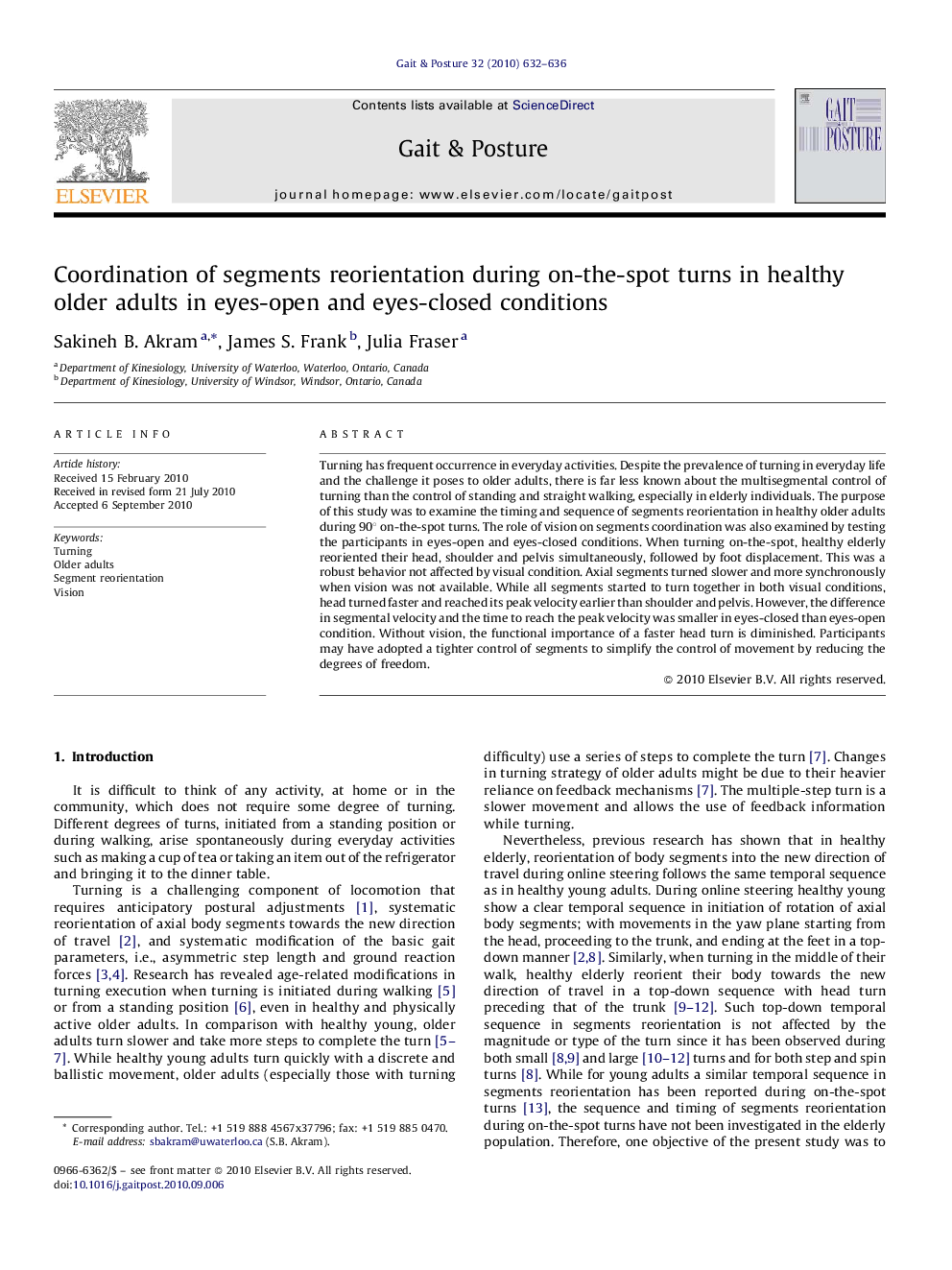| Article ID | Journal | Published Year | Pages | File Type |
|---|---|---|---|---|
| 4057026 | Gait & Posture | 2010 | 5 Pages |
Turning has frequent occurrence in everyday activities. Despite the prevalence of turning in everyday life and the challenge it poses to older adults, there is far less known about the multisegmental control of turning than the control of standing and straight walking, especially in elderly individuals. The purpose of this study was to examine the timing and sequence of segments reorientation in healthy older adults during 90° on-the-spot turns. The role of vision on segments coordination was also examined by testing the participants in eyes-open and eyes-closed conditions. When turning on-the-spot, healthy elderly reoriented their head, shoulder and pelvis simultaneously, followed by foot displacement. This was a robust behavior not affected by visual condition. Axial segments turned slower and more synchronously when vision was not available. While all segments started to turn together in both visual conditions, head turned faster and reached its peak velocity earlier than shoulder and pelvis. However, the difference in segmental velocity and the time to reach the peak velocity was smaller in eyes-closed than eyes-open condition. Without vision, the functional importance of a faster head turn is diminished. Participants may have adopted a tighter control of segments to simplify the control of movement by reducing the degrees of freedom.
